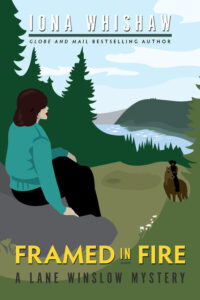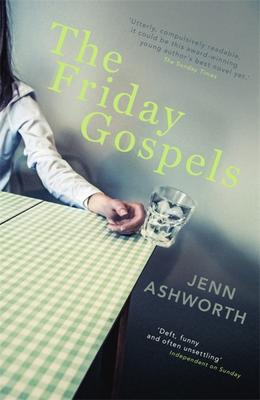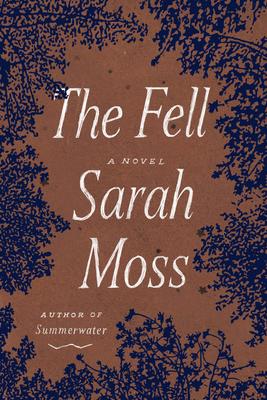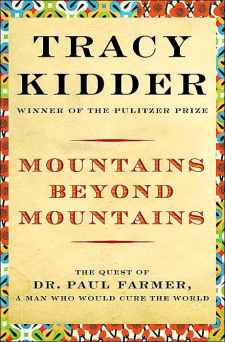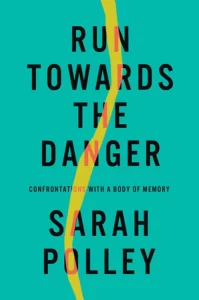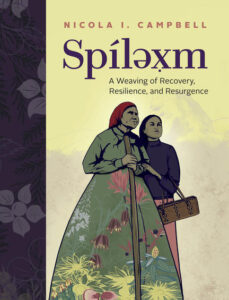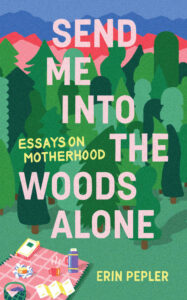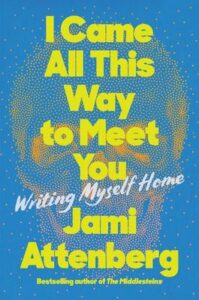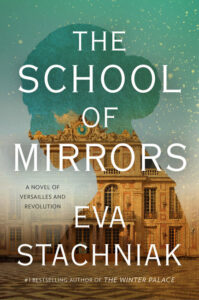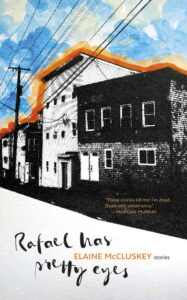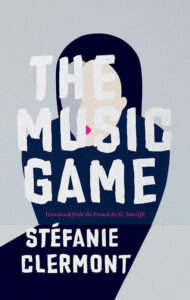May 9, 2022
Cambium Blue, by Maureen Brownlee
Oh my gosh, I loved Maureen Brownlee’s Cambium Blue from its first pages, with characters so vivid, sympathetic and familiar that I felt like I was watching a small town TV drama and the story’s spell was never broken. The story moving between the perspectives of Stevie, single mom turned newspaper reporter; her eccentric neighbour Nash, a veteran of the Spanish Civil War; and Maggie, the community newspaper publisher trying to decide whether or not to carry on with her flagging business after the death of her husband. It’s 1995 and changes are already afoot in the rural British Columbia town of Beauty Creek, ever since the sawmill closed down, which has locals are struggling, plus a beetle infestation is threatening the area’s most valued resource and local politicians are determined to add polish and red tape to the way things things have always been done.
A smooth-talking businessman is promising fortune in the form of a luxury resort, but not everybody is convinced he has town’s best interests in mind. Similarly controversial is a crackdown on Nash’s yard full of things he’s scavenged from the town dump, which has Stevie coming to his defence once they’ve developed a prickly connection when she dares to interview him about his history for the paper, but Stevie’s never been an advocate for anybody before, a teen mom who never finished high school, though Maggie sees something in her and has given her a chance to prove herself, the kind of chance Maggie herself might have appreciated once upon a time before her promise had been overwhelmed by that of her husband.
Cambium Blue is a novel about community, and change, its necessity sometimes and other times one must rail against it. It’s also a beautiful ode to community newspapers, situated at a moment just before the advent of the internet made the business seem impossible—though some of defied the odds. (Brownlee’s biography mentions her ten years spent as “variously publisher, editor, reporter, photographer, graphic designer and janitor for a weekly community newspaper.”) There’s a certain amount of small town dynamics that make the story especially compelling, but there’s nothing tawdry about this, Brownlee permitting each of her characters such a fierce dignity and inspiring sense of self that makes the story so alive. Such characterization, along with beautiful prose, resulting in novel that really sings, and reading it was moving, and such a pleasure.
May 4, 2022
New Lane Winslow: Framed in Fire
Being ill last week was not without its advantages, among them: a chance to spend an entire Friday in bed reading the new Lane Winslow. Framed in Fire is the ninth title in this detective series set in and around Nelson, BC, in the late 1940s, and throughout the series, author Iona Whishaw has performed the remarkable feat of tying her plots to so many issues relevant to our present-day experience—racism, xenophobia, domestic violence, rape, ideas about women’s independence, and more. And I suppose it shouldn’t be so remarkable to find such stories in historical fiction, these issues being—unfortunately—timeless. But that Whishaw manages to address them without anachronism is what’s really impressive. And while I’ll admit there might be something just a little too good about the people of King’s Cove—the murderers and dead bodies among them notwithstanding—I am not sure such enlightenment is entirely anachronistic either. Because as much as we excuse egregious deeds and ideas of past figures for being “of their time,” it’s also true that there were always people who knew that all people were deserving of rights, that colonialism was barbaric, the women were people. In Framed By Fire, Lane encounters an Indigenous person for the first time since her arrival in Canada, and has her preconceptions challenged that First Peoples were thoroughly of the past. And while other characters do reinforce the racist and colonial mindsets reflective of the population at large, that Whishaw writes others who challenge such ideas is smart and subversive, and why these stories read as so fresh and fascinating.
April 28, 2022
The Friday Gospels, by Jenn Ashworth
I wanted something new, something different. There’s an award called The Portico Prize, given “for the book that best evokes the spirit of the North of England, open to new works of fiction, non-fiction, and poetry.” I found the 2022 shortlist, and sought out some titles from it when we were at Storytellers Inc, and picked up The Mayflies, by Andrew O’Hagan, whom I’ve read before and which was published in Canada, but it sounded great. And then I also bought a book by Jenn Ashworth, an Lancashire author whose nominated book Ghosted wasn’t on the shelf, but her 2013 novel The Friday Gospels was, a review on the back of it reading “put me in mind of Mike Leigh.”
And oh, I loved it so completely. Instead it terrific when longing ends up in something that so completely satisfies?
The Friday Gospels takes place over a single day in the life of a Lancashire Mormon family whose second son is returning from two years away on a mission, the point of view moving between each member of the family—younger sister Jeannie: troubled older brother Julian; father Martin who’s fallen for a woman he met in the park while out with the dog; his wife Pauline, who’s become a shut-in and struggles to walk, plus Gary himself, whose actual experience and the way he’s regarded by his family are wildly divergent. But then, as it becomes clear, this is the case with all the family members, each one hiding shocking secrets, and just when you think such a character could not possibly have your sympathy, Ashworth turns her story inside out, the most incredible sleight of hand, and she does it again and again.
So that there is bleakness, but also so much humour, and humanity, gorgeous love and redemption, and the most ridiculous-seeming character is brought to life so vividly, flawed and human, tough and tender. With a plot that twists and turns—I read this on the plane and found myself gasping, whisper-shouting “NO!” at the page more than once—I was thoroughly gripped by this story of a single family, but also tremendously moved. I loved this book, and am very happy I also picked up a copy of Ghosted so I have that one to look forward to.
April 25, 2022
The Fell, by Sarah Moss
I am besotted with Sarah Moss’s slim and haunting stories, beginning with Ghost Wall, and then Summerwater, and now, her latest, The Fell, which I read on our plane journey home from England. (Interestingly, the one book I’ve read by her that wasn’t slim [Signs for Lost Children]) I didn’t like at all.)
Our plane journey home from England took place one year from the day that my husband and I received our first Covid vaccines, and while things since that day have not unfolded as neatly as we would have hoped, to have this long-awaited journey finally happening seems like the most fitting anniversary, and I just feel so tremendously lucky.
I think it’s easy to forget how many lifetimes have been contained within the last two-and-half years, so many plot twists, so many steps forward and two steps back. The idea of the pandemic is like an ever-looming dark cloud overhead, even though the reality of the experience has been much more textured, layered, unfolding, and even interesting. Interesting especially because the lack of certainty has been unmooring in fascinating ways, even while people stand resolute in their respective camps. (Whatever news sources you read, whatever your beliefs about vaccines–it’s all a story you’ve been writing alongside other people you trust about what this thing is and how it should shape our lives (or not). And in many ways, The Coronavirus has become a host story for a million other parasitic stories–our politics, our most intimate tensions, our economic ideas, our religious values, our parental aspirations. What a heavy frickin’ story, y’all. What a weight.)
Something that has helped me a lot in the last two years has been paying attention to the ways that life goes on in other places where Covid responses were different from ours here in Ontario—a former classmate in Shanghai, friends in New York City, my sister in Alberta, my husband’s family in the UK. The awareness (which I’ve written about before) that there really hasn’t been a way to get it right, that a virus is a formidable foe, and that most of us are just muddling through and doing our best under leadership that’s not necessarily nefarious (Boris Johnson’s lockdown birthday parties, notwithstanding).
It was interesting to be in England last week, which has decided to be finished with Covid altogether, where every fourth person we passed on the street had a hacking cough. I don’t think that doing away with Covid restrictions altogether is the right thing to do, but I also don’t really know what the right thing to do is, and I know we’re a public who has definitely lost our appetite for extreme lockdown measures. (Also, my youngest child testing positive for Covid yesterday, and her symptoms were a few hours of a low-grade fever and a runny nose, all of which have dissipated, and the rest of us continue to test negative, be symptom-free, FINGERS CROSSED. Hooray for vaccines.)
The Fell took me back to a different time though, when the skies were emptied of planes and the jury was still out on washing your bananas with Lysol. It’s November 2020, and Kate—single mother, waitress on furlough—has been quarantining at home with her teenage son after a Covid exposure, and suddenly decides that she can’t take it any more. And so off she goes on a walk on the fells near her home in the Peak District, strictly against the rules, even though the chances of her running into anybody else are nil. The trouble arises when she doesn’t come home.
Do you remember being irate about the idea of people leaving the house more than once a day for exercise? I sure do! Considering perhaps that even that was excessive? The sheer irresponsibility of young people gathering with their friends in the park!?!? An adherence to “rules” instead of any kind of pragmatism. In April 2020, I ordered a bouquet of flowers from a local business because somebody in my Facebook feed was squawking that any kind of “unessential” purchase was putting lives at risk, and I needed to defy her. Sometimes I was furious at the scofflaws, sometimes I was doing the scofflawing myself. All of it was so annoying, and much of it continues to be so.
The Fell is told from the perspectives of Kate, her son Matt, her elderly neighbour Alice (who’s had cancer, and therefore is considered vulnerable, in need of protection, and thus abandoned to her own company), and Rob, who works in Mountain Rescue and is called upon to look for Kate when her son reports her missing.
So much of the arguments against lockdowns and Covid government regulation has been so terribly idiotic that we’ve been deprived of the opportunity for proper reflection on what these responses have been. On what has indeed been their fall-out, the depravity. I think of elderly people left alone in care homes for months at a time. Of the mental health toll. Looking back, the fact that children in Ontario had to isolate for ten days each time they were exposed to Covid via a classmate seems needlessly excessive. The fact that small retail shops were closed for months in 2021, undermining faith in public health measures in such a dangerous way. It’s all be a lot of not great.
And yet the number of people whose response to this madness was supporting wannabe fascists?
It’s enough to make one’s head explode.
The Fell, however, is in lieu of that. A novel about risks and consequences, about community and isolation, about what it really means to protect each other, to save each other. About the risks of life itself, and what it means to take those risks, and unlike so much of the current discourse, it doesn’t offer easy answers. There are no easy answers, but asking the questions is the point.
April 14, 2022
Mountains Beyond Mountains
“The world is infinitely complicated. You don’t have to catch up to the complexity; it will inevitably catch up with you. It will bury you with considerations, contextualizations, and unintended consequences. But if, in the midst of the rubble, you can resist explaining away your earliest moral instincts, then you will have preserved something good and true. You might make some people’s lives more livable, more beautiful even. You might make some people uncomfortable. You might feel sad in a sad world. You might feel mad in a maddening world. It’s not an easy way to be—especially if you travel between cultures and classes like Farmer did—but there’s succor in the resistance. It’s the best way I know to stay human.” Courtney E. Martin
I’ve been reading a lot lately, and not writing down nearly enough about any of that (which is FINE, really, because the reading is the point) but I wanted to note something about the wonderful experience I had reading Tracy Kidder’s Mountains Beyond Mountains, a 2003 biography of Paul Former, a global health pioneer whose untimely death shook his community in February.
I’d first learned about him through Courtney Martin’s newsletter, and then a couple of days later, CBC Ideas replayed their conversation with him while I was driving in the car, and I knew this was somebody I wanted to learn more about.
I am preoccupied these days with learning how to be properly human in the world, but also doing so without assuming political posturing, which had been my strategy in the difficult couple of years before the pandemic, a strategy that seemed less and less effective once things got really complicated and I began to understand that politics is inherently divisive and inadequate to meet the challenges of our current moment, which requires all hands on deck. And of course, this is impossible. So what to do in the face of that? And Paul Farmer’s life is an answer to that question. (Not THE answer. Kidder writes wonderfully about how Farmer is not a model to follow. Just an example that pushing against the impossible is possible.)
I signed up for a reading group Courtney Martin was running and had two days to read this 300 page book before then, which I knew would be challenge, but it turned out not to be, because I couldn’t put it down. Farmer’s origin story, the story of his childhood, is extraordinary—Martin writes a lot about consciously raising our children and Farmer’s story made me think about the unlikely formula for raising a human being into him, which involves a peripatetic childhood living, variously, on a boat and a school bus. And that he died young (he was in his early sixties) made me think about how fortunate it was that he seemed to emerge fully formed, his worldview solid by his early twenties, and he knew what he wanted to do with his life, working as an anthropologist and a physician. (The idea too about Farmer not being THE answer to the question. It makes me think about Alexandria Ocasio-Cortez too being posited as THE answer—these are both extraordinarily brilliant individuals. Most people can’t live up these standards. But surely there is something we can learn from them all the same?)
Farmer couldn’t fix it all, he couldn’t heal everyone, but he went out of his way to help a whole bunch of people in his life, determining that every single life was worth trying to save. Which didn’t always make sense to others—what was the point of saving a handful of others when so many others are suffering? And yet. His story a metaphor of the rest of us attesting to the value of keeping going, of keeping trying, even when it seems it doesn’t matter. But it does. The trying and the outcome, all of it.
April 11, 2022
4 Great Essay Collections
Run Towards the Danger, by Sarah Polley
I’ve read a run of great essay collections lately, which kicked off with actor/director Sarah Polley’s bestselling new release. It was a book I regarded curiously, at first, because the premise was strange: six essays about various experiences from Polley’s life, in which an adult perspective circles back on childhood trauma. Polley is a former child actor and now an acclaimed film director and writer, and I wondered if the whole project might be a gimmick, but then I kept hearing from reader after reader about how excellent the book actually is. And they were right. I loved this one, its searing, visceral writing, its willingness to complicate, to circle back and around, its acknowledgement of darkness and light, often in the very same place. Brave, original, and interesting, Polley writes about growing up too soon after the death of her mother, about stage fright, exploitation as a child actor, about carrying the story of her experience abuse by a notorious celebrity, about a complicated pregnancy and introduction to motherhood. Polley has had a remarkable life and she owns both her privilege and her trials at once, demonstrating that our experiences and our perceptions of experiences are multitudinous and ever subject to change.
Spílexm, by Nicola I. Campbell
Celebrated children’s book author Nicola I. Campbell’s Spílexm (which means “remembered stories” in the language spoken by Nlaka’pamux in British Columbia) is a beautiful collection weaving poetry, memoir, journals and letters to tell her story of becoming as Nlaka’pamux, Sylix, and Metis, and the daughter/granddaughter/etc of residential school survivors. This is a story of grief and survival, and a testament to the remarkable powers of love, family ties and personal will to overcome trauma and design a better future for one’s self, and Campbell imagines the same for Indigenous people across Turtle Island. My favourite parts of the story are those where she writes about canoe racing, discovering her own power and the power of community. This is such a generous and achingly beautiful offering to the world.
Send Me Into the Woods Alone, by Erin Pepler
While this collection is subtitled “Essays on Motherhood,” it too is a story of becoming, a story of womanhood and daughterhood, and personhood. Truly it’s a smorgasbord of goodness, essays recounting a difficult pregnancy, the details of labour (that one is called “A Million Hands in One Vagina”), and onward through the years. At the beginning I wondered if these essays might suffer a bit from the desire to be relatable and inclusive at the expense of specificity, but such concerns fell away as Pepler delves into her own story and writes with such candour about her struggles with anxiety, and about how her own family experiences growing up inform her parenting now, for better or for worse. The collection is tremendously moving, but also very funny—I kept reading parts aloud to whoever happened to be in the room with me. Like motherhood itself, Send Me Into The Woods Alone is equal-parts light and dark, joy and misery, another writer who’s unafraid to be complicated and tell the truth.
I Came All This Way to Meet You, by Jami Attenberg
And finally this collection by American novelist Attenberg, the story of her Midwestern roots, her years in New York, and finding home in New Orleans, an unlikely outcome for someone who spent years couch-surfing, which turned into years staying in friends’ spare rooms as their lives stabilized but hers didn’t for such a long time. Coming later to writing, put off by an assault in her first year of undergraduate studies, a story she tells in connection to the testimony of Christine Blasey Ford about how Supreme Court nominee had sexually assaulted her years before. Attenberg writes, “Why do we believe these men are the best when they are the worst? Why do we hold on to them?” In this collection, Attenberg writes her process of coming to own her story and her voice, all of this underlined her her persistence in staying true to her art through the ups and downs of the writing life and her determination to succeed as a writer.
March 28, 2022
The School of Mirrors, by Eva Stachniak
Last week, I read the same novel all week long, a novel set in 18th century France, no less, neither of which is my usual speed, but my friend Eva Stachniak is such a magnificent author that it was only a pleasure spending time with her latest, The School of Mirrors.
The story begins with Veronique, a young girl taken from her destitute family to be trained as courtesan to a Polish Count. But it turns out that the Count is actually the King of France, the girls discarded when he tires of them, all of this orchestrated by the King’s mistress and a network of other figures at Versailles.
Young Veronique soon becomes pregnant, and is taken away to give birth in secret, her child taken from her, and Marie-Louise overcomes a lonely and difficult childhood to study midwifery and pursue one of the vocations available for women. As with the girls of Deer Park, from whom Veronique’s story is imagined, the story of these midwives is taken from life.
By the dawn of the French Revolution, Marie-Louise is married to a radical lawyer pushing to make France into a Republic, and she keeps quiet about the story of her own origins, which she knows so little of anyway. But as the politics of the moment grow more and more intense, the consequences of Marie-Louise’s ties of Versailles become much more fraught. When she finally reconnects with her mother, who is poor and suffering from dementia after such a difficult life, the list of secrets she’s having to keep is growing ever longer.
“‘The present circumstances’ were growing worse. Hortense would come home from the market furious. There was no spring lettuce. Leeks had vanished. Vendors pushed wiltered carrots on her and when she protested told her not to be too picky if she wished to be served at all. Her regular cheese merchant tried to charge her almost double what he charged last week so she had to go elsewhere. Bread had gone up in price again. People said it was because of vagrants, though what vagrants could have to do with the disappearance of leeks or the price of bread was still a mystery. Try saying that at the market though. You get spat on. Or pushed into the mud. A young fellow got beaten up because a fishmonger called him a king’s spy. No one minded their own business anymore. Everyone had an opinion to defend. The more outrageous the better. People no longer talked, but yelled. Where was it all heading? Where would it end?”
The School of Mirrors
I wondered, upon reflecting on this book, if it’s not a case of “history repeating” as much as “this is how it always is.” The instability, drive for revolution and change, and also appetite for war, and how while women are never the drivers of any of this, they’re the ones left to pick up the pieces, to keep things going, to put food on the table, delivering the babies, delivering the future, birth and death being their business, always.
Stachniak’s writing is wonderful, the characters gorgeously rendered, and the era brought to life in terrific fashion. The School of Mirrors is an excellent read, providing fascinating insight into the experiences of women and their proximity to power, and meaningful connections to right now.
March 21, 2022
Rafael Has Pretty Eyes, by Elaine McCluskey
No one writes voice quite like Elaine McCluskey, and not just one voice, but all the voices, ranging from the news reporter just laid off after twenty-five years, to the canine companion of man whose brain damage to the front cortex has caused an unfortunate condition termed Witzelsucht, a bouncer with concussion symptoms, or the man whose story begins, “I am at a Toast ‘n’ Roast for my mother’s fourth husband, Wayne. Wayne, of course, is a dud. Who else do you get on the fourth attempt: Idris Elba?” And later on in the same story, “It’s Never What You Think It Is,” which opens McCluskey’s latest collection Rafael Has Pretty Eyes, the character notes that he’s convinced “that life is one inside joke after another and that people fall into two categories: the people who believe Trailer Park Boys is real and the ones who don’t, and I no longer know where I fit because last night I saw Bubbles driving a Masterati Quattraporte with smoked windows on the Waverley Road in Dartmouth and it seemed quite normal to me.”
I have loved Elaine McCluskey’s work for ten years now, as a search through my blog archives proves, ever since I first read her debut collection The Watermelon Social, and got hooked on this writer who, with a single sentence, can break my heart and make me laugh until I cry all at once. She writes about oddballs with such a remarkable immediacy that they’re relatable, and with such incredible specificity too (“a Masterati Quattraporte with smoked windows on the Waverley Road in Dartmouth,” for example) that she blows my mind with her acuity.
(Upon reading her latest, it also occurs to me that I love McCluskey’s work for the same reason I love Katherine Heiny’s, which might be the highest literary compliment I’m capable of giving.)
McCluskey writes about people who’ve fallen through the cracks, people who are hanging on just barely, suffering evictions, breakups, or being held hostage at gunpoint. The extraordinary side of ordinary—the radio DJ who’s come down in the world and makes his living now at a pay day loan outlet, the local city councillor for whom it’s all about to fall apart. Characters who seem like anybody you might pass on the street, rendered vivid by the power of McCluskey’s narrative voice, and then the story takes off, ending up in a place where you never imagined it going. (“Life is just one extended series of anecdotes strung together until they kill you.”)
I loved this book. Perfect for anyone who thinks the Trailer Park Boys are real or otherwise, and even those who aren’t always drawn to short stories, because these are short stories that underline why such things are worth reading.
March 15, 2022
Looking for Jane, by Heather Marshall
What people who haven’t thought much don’t tend to know is that abortion is not the opposite of adoption, or infertility, or miscarriage, or motherhood, or even choosing not to have children at all, and also there are plenty of people who’ve experienced two or more of these things, and that these things don’t even exist on some kind of moral spectrum, but instead, they’re a vivid constellation of lived experiences, and what I love about Heather Marshall’s extraordinary Looking for Jane is the way the story connects them all, making plain what so many women already know but still might not have the courage to put into words even almost 35 years after abortion was made legal in Canada.
Because the abortion rights activists didn’t win this fight just for themselves. This fight and this victory was for their daughters, and their daughters’ daughters. To make sure a horrible cycle was broken, and the next generation would be better off than their own. To leave these women a world where no one can tell them that they don’t own their own bodies. Where they don’t need to hang themselves or try to slit their wrists in a bathtub just to know what it feels like to have control. It all comes down to having the right to make the choice.
—Looking for Jane
What a radical thing this novel is, even with its old-fashioned cover with an image of a woman from behind, with its sepia tones suggesting this would be a safe bet for your great-aunt’s book club. Because it definitely is—your great aunt knows something about reproductive justice that those of us who came of age after the Morgantaler Decision of 1988 might always have taken for granted, never knowing a time when pregnant people weren’t free to make their own reproductive choices. Her generation will remember a time when pregnant girls were sent to “homes” where they lived—steeped in a shame they’d carry for the rest of their lives—until their babies were born, and then subsequently adopted. Or else the girls got married in a hurry and had to drop out of school, leave their jobs, give up on their dreams, and maybe it would all turn out to be worth it, but how do you ever know?
Looking for Jane begins with a letter that was never received, a letter that a mother wrote to her daughter, to be opened after her death, informing that daughter that she had actually been adopted, and that her birth mother had not willingly given her up for adoption after all. The letter finds its way into the hands of Angela, who is currently mourning two miscarriages and trying again via IVF for a pregnancy to create the family she and her wife have been dreaming of. Angela is adopted herself, and so the letter she finds proves especially resonant, and she begins determined to track down the woman who was intended to receive it almost a decade ago.
And then the book takes its reader back to 1961, the bad old days, when Evelyn Taylor finds herself removed to a maternity home and all her choices and autonomy removed from her in that process, and she’s unable to advocate for herself when she decides she wants to keep her baby, after she learns that babies being born at the home are actually being sold. The rules at the home are cruel, dehumanizing, and serve the patriarchal power of the Catholic Church—and this experience is what inspires Dr. Evelyn Taylor, almost years later, to have pursued a medical career, trained with Dr. Henry Morgantaler in Montreal, and be risking everything to provide pregnant women with abortions. She joins the Abortion Caravan protest in Ottawa in 1970—read my starred review of Karin Wells’ spectacular book on the subject, and how wonderful to see this story be rendered in fiction, because this is a part of history that every Canadian should know—helping deliver a coffin to the Prime Minister’s doorstep as a symbol of the more than one thousand Canadian women who died each year after illegal abortions, and then joins the protest in the House of Commons, women shutting down parliament after chaining themselves to their seats.
Ten years after that, Nancy Mitchell accompanies her cousin for an illegal abortion (legal abortions in Canada in 1980 had to be permitted by a panel of doctors, which meant decisions were arbitrary and no doubt race and class factored in big time, as both things continue to make abortion more or less accessible for pregnant people today) which goes very wrong, and so when Nancy finds herself with an unwanted pregnancy not long after, she is careful to find an abortion via an underground network of providers whose work was safe and reputable—and whose clinics would be the target of police raids. And this is how Nancy connects with Dr. Taylor, and comes to volunteer at her clinic at great personal risk, continuing to do so until 1988 when abortion was legalized and providers didn’t need to hide anymore.
But of course the fight wasn’t over, as anyone who’s paying attention knows well. Abortion providers are threatened with violence to this day. In 1992, Dr. Henry Morgantaler’s clinic in Toronto was firebombed at its location just around the corner from my where I live now, and I knew absolutely nothing about any of this ten years later when Dr. Morgantaler performed my own abortion, when it never even occurred to me not to take my access to abortion for granted, or to consider how hard my foremothers had fought for it. Because I’d never read a book like Marshall’s, a book that connects the dots, which spells out the patriarchal forces intent on keep women from having freedom over their own destinies, underlining just how much reproductive freedom underlines our personal foundations.
(There’s more to it too—a long history of forced sterilization of Indigenous and racialized women, the “sixties scoop,” by which Indigenous children were taken from their cultures and adopted into white families, the foster care system which keeps too many racialized women from raising their own kids. Marshall’s book is definitely the history of whiteness and reproductive justice, and that’s just the tip of the iceberg.)
I loved this novel, and also that it’s one of the bestselling titles in Canada right now, because it’s a daring and radical text dressed up as a women’s book club pick. It’s a moving and absorbing read, heartbreaking and infuriating in places, unabashedly Canadian in the most interesting way, but also universal at once.
March 10, 2022
The Music Game, by Stéfanie Clermont, translated by JC Sutcliffe
‘”Three shadows are bending over each other around a table,” Celine begins… “They are old, young, it doesn’t matter. A hand moves and the number three blurs. Maybe there are actually four of them, or even more. A hand comes out of the shade, rests between the black coats. The glasses on the table are also lanterns. They don’t touch them. They’re too busy with plotting.”‘
I’d held off on picking up Stéfanie Clermont’s award-winning first book, The Music Game, which just came out last month in English translation by JC Sutcliffe, because it’s been a tough time and I’ve been wary of anything too bleak—this is a collection of linked stories loosely structured around a suicide after all. But it turned out to not be a painful read, in spite of a whole lot of pain and longing at its core, because fundamentally, The Music Game is just interesting. Pitched to me as a book for fans of Sally Rooney, or else a modern version of The Big Chill, both of which were enough to pique my interest, and I enjoyed it very much.
This is the story of three friends who, like the book’s author, are Franco-Ontarian, growing up around Ottawa. The collection more cyclical than linear, moving back and forth between their teenage years and then their lives a decade or so on, and encompassing the stories of other friends and roommates and voices, underlining the surprising ways that lives overlap and also that the past is never truly behind us.
Clermont’s characters work dead-end jobs, struggle to complete their theses, argue about politics, look for roommates, get tattoos, experience gender fluidity, escape dangerous relationships, have creepy cousins and stepdads, take to the streets, and rue their parents’ bourgeois values all the while they spend weekends at their country house. They grow up too fast, but can’t seem to move on, all the while trying to plot their way through a culture and even a counterculture that seems to have set them for failure. Staying connected, and falling out of touch, and giving up, and also persisting.
And maybe when I say the book is cyclical, what I really mean it that it’s a web, with strange, uncanny and surprising connections, weird gaps, and a whole lot of questions, and each of these characters (caught in it? spinning it?) read as wondrously alive and real, achingly messy and complicated.

